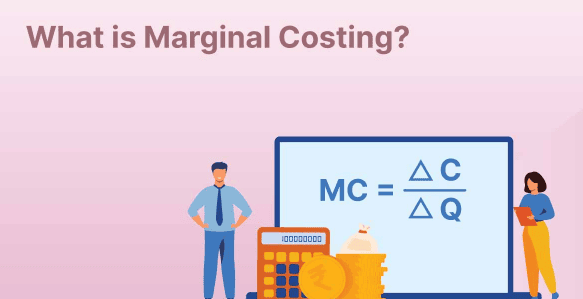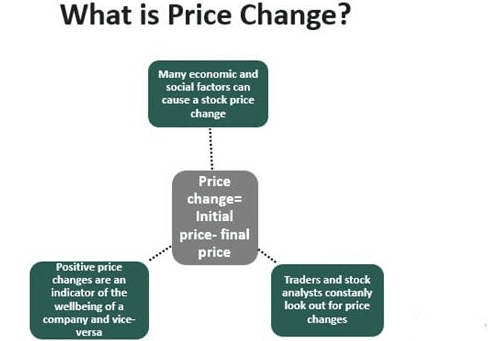Marginal Costing | Crash Course for UGC NET Commerce PDF Download
| Table of contents |

|
| What is Marginal Cost? |

|
| What is Change in Costs? |

|
| What is Change in Quantity? |

|
| Need for Marginal Costing |

|
What is Marginal Cost?

Marginal cost is the variable costs incurred when producing additional units of a goods or services. It is calculated when a breakeven point has been reached – fixed costs are incorporated in the finished product and only the direct variable costs have yet to be accounted for. The usual variable costs included are labor and materials, plus the estimated increases in fixed costs (if any), such as: administration, overhead, and selling expenses. The marginal cost formula can be used in financial modeling to optimize the generation of cash flow.
Below we will break down the various components of the marginal cost formula.
Here is the Marginal Cost Formula:
Marginal Cost = (Change in Costs) / (Change in Quantity)
What is Change in Costs?

At each level of production and during each time period, costs of production may increase or decrease, especially when the need arises to produce more or less volume of output. If manufacturing additional units requires hiring one or two workers and increases the purchase cost of raw materials, then a change in the overall production cost will result. To determine the change in costs, simply deduct the production costs incurred at during the first output run from the production costs in the next batch when output has increased.
What is Change in Quantity?
Since it’s inevitable that the volume of output will increase or decrease with each level of production. Thus, the quantities involved are significant enough to evaluate the changes made. An increase or decrease in the volume of goods produced translates to costs; therefore, it is important to know the difference. To determine the changes in quantity, the number of goods made in the first production run is deducted from the volume of output made in the following production run.
An Example of the Marginal Cost Formula
Obama Tires, a public company, consistently manufactures 10,000 units of truck tires each year, incurring production costs of $5 million. The following year, the market demand for tires increases significantly, requiring the additional production of units, which prompts management to purchase more raw materials and spare parts as well as hire more manpower. This demand results in overall production costs of $7.5 million to produce 15,000 units in that year. As a financial analyst, you determined the marginal cost of $500 is accounted counted for each additional unit produced.
Marginal cost is the change in the total cost when the quantity produced is incremented by one. That is, it is the cost of producing one more unit of a good. For example, let us suppose:
Variable cost per unit = Rs 25
Fixed cost = Rs 1,00,000
Cost of 10,000 units = 25 × 10,000 = Rs 2,50,000
Total Cost of 10,000 units = Fixed Cost + Variable Cost
= 1,00,000 + 2,50,000
= Rs 3,50,000
Total cost of 10,001 units = 1,00,000 + 2,50,025 = Rs 3,50,025
Marginal Cost = 3,50,025 – 3,50,000
= Rs 25
Need for Marginal Costing
Let us see why marginal costing is required:
Variable cost per unit remains constant; any increase or decrease in production changes the total cost of output.
Total fixed cost remains unchanged up to a certain level of production and does not vary with increase or decrease in production. It means the fixed cost remains constant in terms of total cost.
Fixed expenses exclude from the total cost in marginal costing technique and provide us the same cost per unit up to a certain level of production.
Features of Marginal Costing
Features of marginal costing are as follows:
- Marginal costing is used to know the impact of variable cost on the volume of production or output.
- Break-even analysis is an integral and important part of marginal costing.
- Contribution of each product or department is a foundation to know the profitability of the product or department.
- Addition of variable cost and profit to contribution is equal to selling price.
- Marginal costing is the base of valuation of stock of finished product and work in progress.
- Fixed cost is recovered from contribution and variable cost is charged to production.
- Costs are classified on the basis of fixed and variable costs only. Semi-fixed prices are also converted either as fixed cost or as variable cost.
Advantages of Marginal Costing
The advantages of marginal costing are as follows:
- Easy to operate and simple to understand.
- Marginal costing is useful in profit planning; it is helpful to determine profitability at different level of production and sale.
- It is useful in decision making about fixation of selling price, export decision and make or buy decision.
- Break even analysis and P/V ratio are useful techniques of marginal costing.
- Evaluation of different departments is possible through marginal costing.
- By avoiding arbitrary allocation of fixed cost, it provides control over variable cost.
- Fixed overhead recovery rate is easy.
- Under marginal costing, valuation of inventory done at marginal cost. Therefore, it is not possible to carry forward illogical fixed overheads from one accounting period to the next period.
- Since fixed cost is not controllable in short period, it helps to concentrate in control over variable cost.
|
145 videos|236 docs|166 tests
|
FAQs on Marginal Costing - Crash Course for UGC NET Commerce
| 1. What is Marginal Cost? |  |
| 2. What is Change in Costs? |  |
| 3. What is Change in Quantity? |  |
| 4. Need for Marginal Costing |  |
| 5. UGC NET Provide 5 meaningful Frequently Asked Questions(FAQs) with detailed answers related to the given article title and exam in the same language as that of the article title |  |















